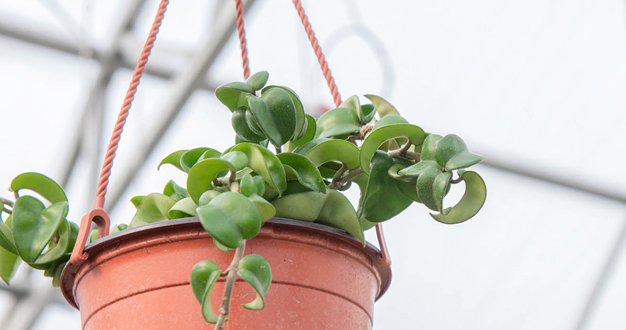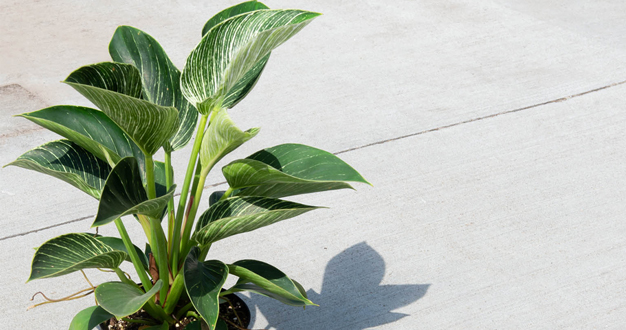
Anthuriums are a funny bunch. They’re either everywhere – like the gorgeous flowering kind – or they’re nowhere and quite hard for collectors to grab. In either case, they’re one of our most favorite houseplants and prized for their interesting bloom structures and fascinating foliage. Here, we introduce you to some of our favorite species of this charming plant – some you can own right now, and others we’re eager to bring the Greenhouse the first chance we get.
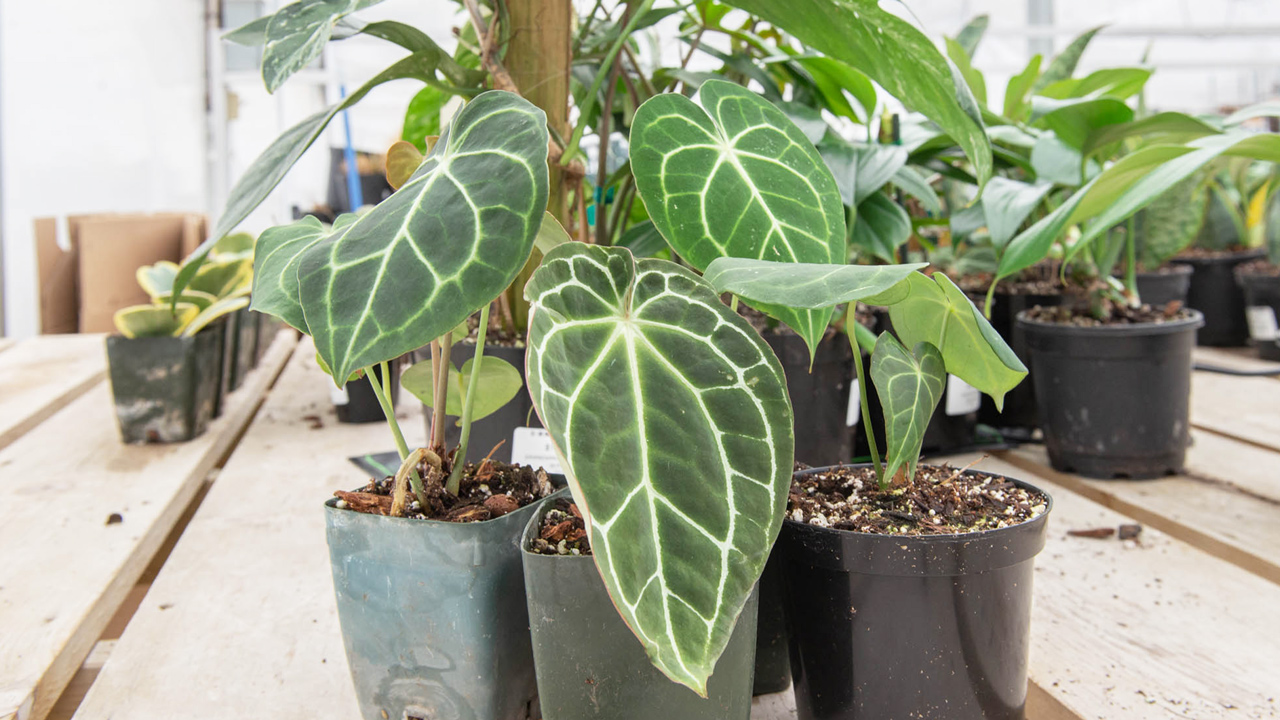
What Makes an Anthurium?
Anthurium is a genus of flowering plant native to humid, forested areas of southern Mexico, Central America, and South America. Some species of anthurium are terrestrial, while many are epiphytic – meaning they live attached to rocks or taller plants and collect water and nutrients from their surroundings rather than the soil.
While the foliage can vary widely between species, the defining characteristic of an anthurium is its bloom – or actually, its cluster of tiny blooms – that grow tightly packed together on a long, slender structure called a spadix. In many species, the spadix is surrounded by a flat, colorful spathe, which is what often attracts the most attention.
Houseplant collectors often divide anthuriums into two distinct categories. The first are the “flowering anthuriums”, which are usually easy to find and loved for their cheerful, long-lasting spathes. These species bring a welcome spot of color to our homes, especially when nothing else is blooming in the winter. The second group are the often called the “foliage anthuriums.” These fascinating species are much rarer and more highly sought-after by collectors. For these hard-to-find beauties, it’s the foliage – its shape, pattern, and size – that draws the most admiration. And it’s a lucky plant parent who gets to enjoy one of them in their collection.
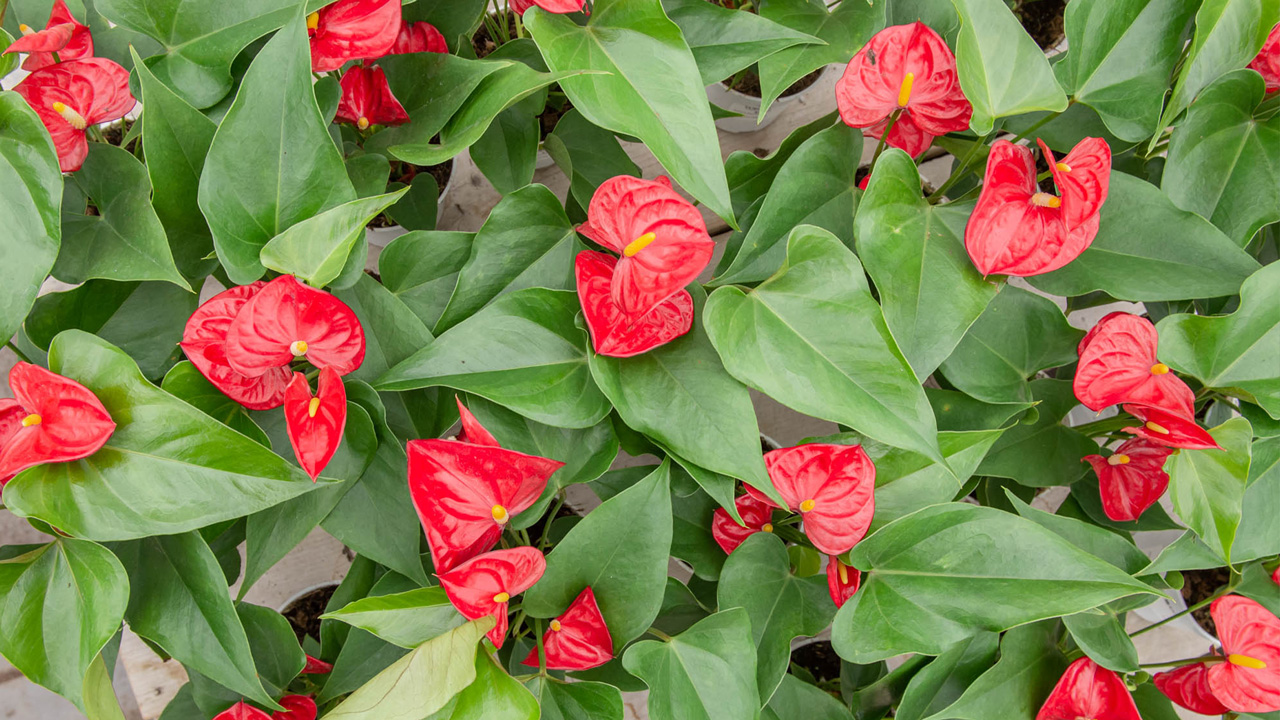
Flowering Anthuriums
These are the anthuriums we see most often – a common and cheerful sight in the Greenhouse, catching our eye with their brilliant color. The flat, heart-shaped spathes come in shades of red, pink, green, and white and stand tall among clusters of heart-shaped, leathery foliage on long, slender stems.
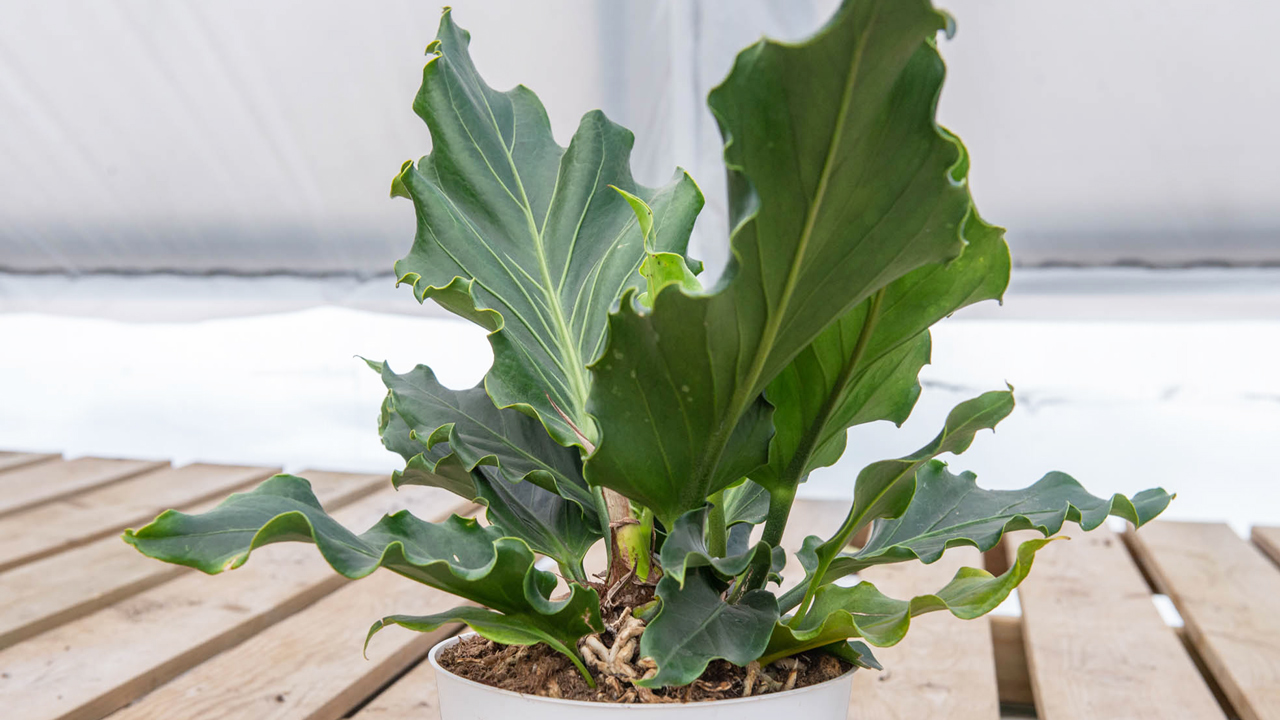
Anthurium plowmanii
For many anthurium species, interesting foliage takes precedence over bright flowers, and that’s the case with Anthurium plowmanii. Much like a bird’s nest fern, its narrow, sword-shaped leaves radiate out in a dense cluster from the center of the plant, and each is gently rippled along the entire edge. Of the harder-to-find anthuriums, A. plowmanii is the one we’re most likely to see in the Greenhouse.
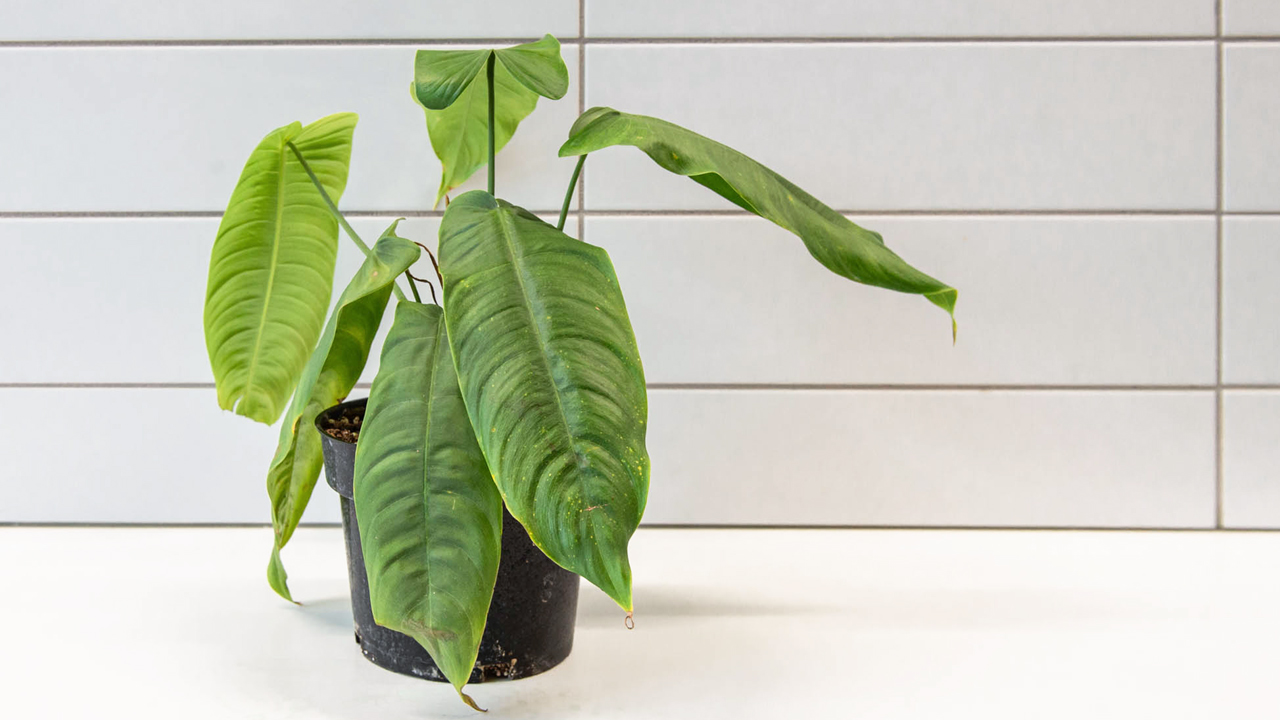
Anthurium veitchii
As a young plant, Anthurium veitchii gives little hint of its plan to become one of the most impressive plants in your collection. With maturity, the dramatic foliage elongates – sometimes to four or five feet in length – with a deeply corrugated texture and glossy dark green color. No wonder it’s often called the “king” anthurium. We’re always on the hunt for these, but they’re quite hard to get a hold of.
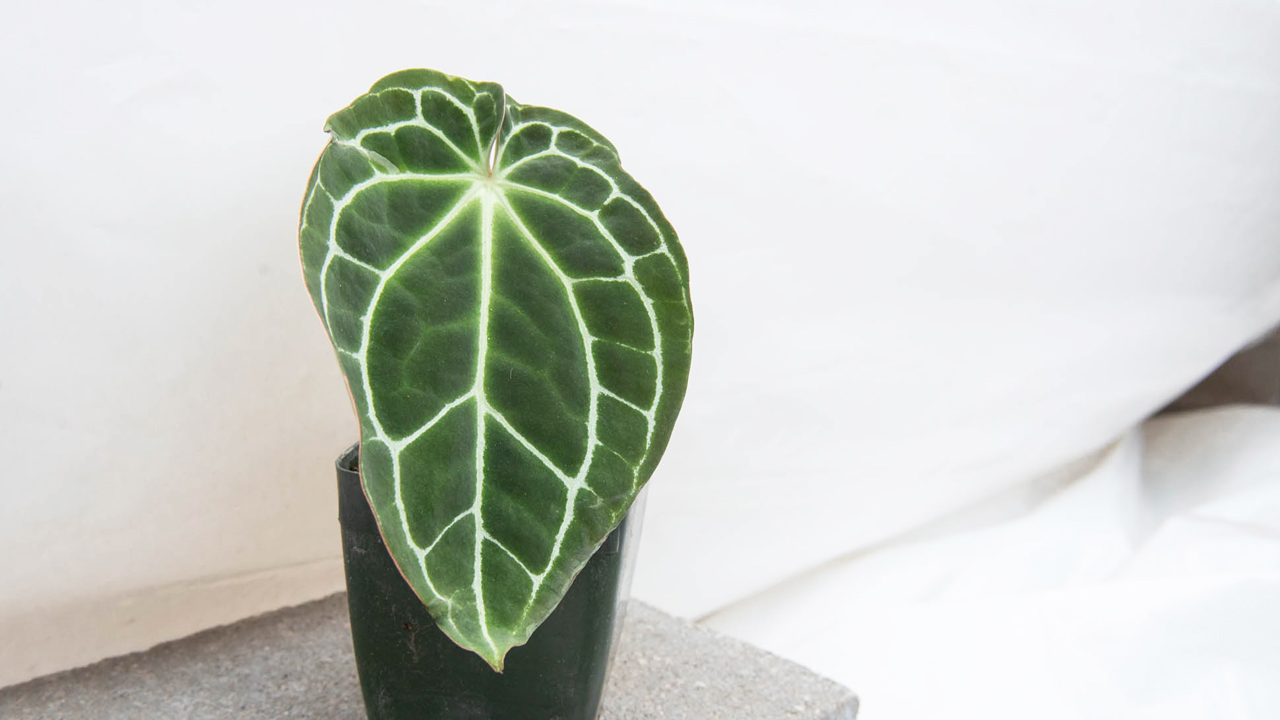
Anthurium crystallinum
A striking beauty, Anthurium crystallinum stands apart from other foliage houseplants with its large, velvety green leaves and crisp white venation. This is a truly rare find, and in the highest demand among collectors. When we’re able to track it down for the Greenhouse collection, it may be just one or two at a time.
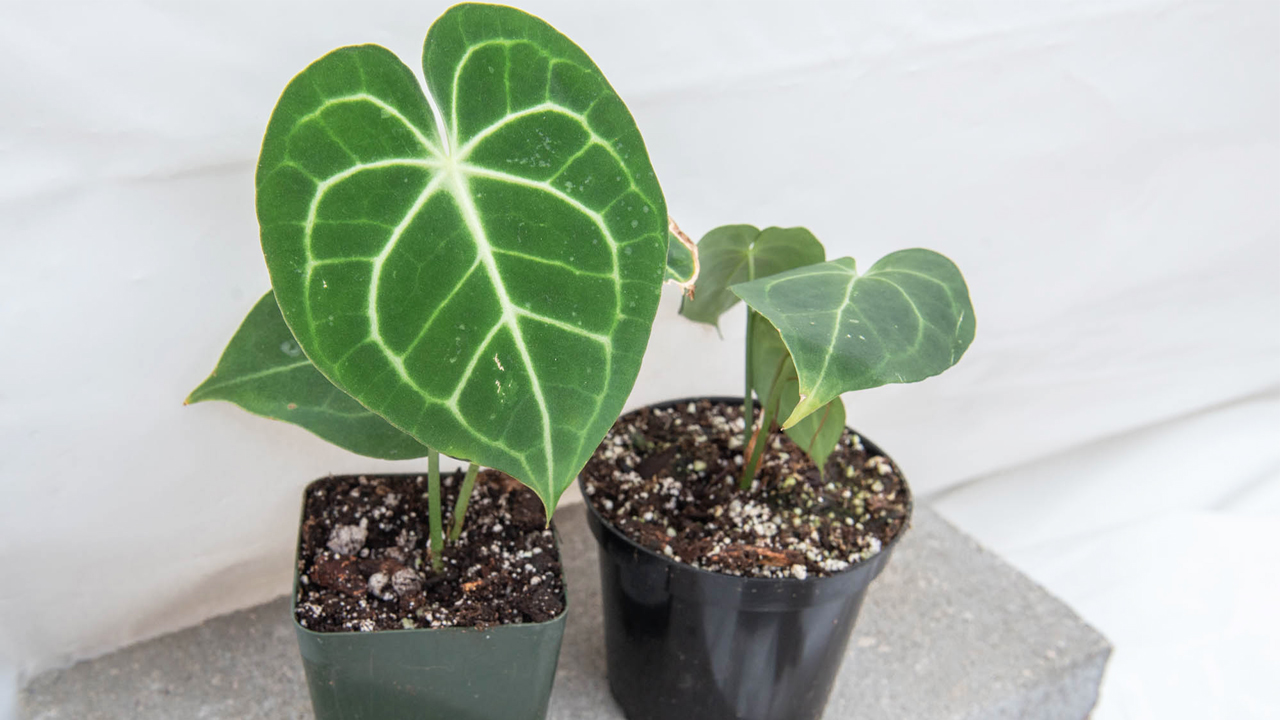
Anthurium clarinervum
Another exceedingly rare find – we’re thrilled if we find just one – Anthurium clarinervum shares a dark green color and contrasting venation with A. crystallinum, and the two are often confused with each other. But for A. clarinervum, the leaves are more classically heart-shaped and have a stiffer – some say cardboard-like – texture.

Anthurium Care
In keeping with their native habitat in shady, tropical forests, anthuriums enjoy lots of bright, indirect light – not direct sun – and humidity. A spot in a well-lit bathroom or kitchen would make them happiest, but if that’s not possible, a room humidifier or a pebble tray will help out too.
In the wild, many anthuriums cling to trees where they experience periods of heavy rain that drains away quickly, so a loose and well-draining but also nutrient-rich potting mix is best. You might try mixing some bark-based orchid mix into a professional, all-purpose potting mix for the perfect combination. Water thoroughly when the mix is dry on top and let it drain well – no anthurium likes to sit in water for very long.
Hard-to-Find But Worth the Hunt
It’s a great day for a plant collector when one of the rare species of anthurium comes home – and we know exactly how that feels. We’re always searching for anthuriums to bring to the Greenhouse, and when we find them, it’s a celebration. If you own one now and have questions, just ask. We’ll be thrilled to admire it with you and glad to help out in any way we can.


